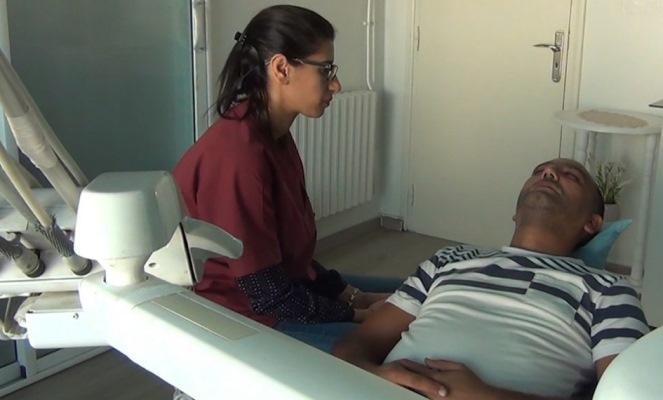To lower the patient's blood pressure, the dentist hypnotized him. This allowed the 51-year-old man to undergo planned treatment.

The patient was immersed in a trance state with the help of Ericksonian hypnotherapy, based on the use of a special hypnotic language, which is distinguished by its brightness and imagery. After about 10 minutes, the patient was in a deep trance, very relaxed, and his blood pressure dropped to a level that allowed him to safely undergo a two-tooth restoration.
“To avoid delaying dental treatment, hypnosis can be used as an adjunct to reduce clinical hypertension in the treatment of patients with uncontrolled hypertension,” write the authors, led by Dr. Asma Muzaffar, MD, Clinical Lecturer at the New York University College of Dentistry ( NYU).
Case history and treatment plan
The patient applied to the New York University College of Dentistry. He had diabetes, hypertension, focal seizures, major depressive disorder, thyroid nodules, and paroxysmal atrial fibrillation.
Intraoral examination revealed moderate gingivitis and spontaneous gum bleeding. When probing in all quadrants at a depth of 2 to 9 mm, bleeding occurred. In addition, generalized tartar and caries were observed.
Due to the existing infection, the extraction of three teeth was included in the treatment plan. The treatment plan included complete plaque removal, regular follow-up and care to eliminate periodontal disease, and composite restorations on nine teeth. It was also planned to install a partial removable denture on the upper and lower jaws.
When the patient arrived for treatment
When the patient arrived for treatment, he informed the dental team that he had forgotten to take his antihypertensive medication. Arterial pressure on the right arm was 159/111. After about 10 minutes, the pressure reading on the left arm was 158/111.
Because the pressure was too high, the patient was asked to reschedule the treatment for another day. And they also suggested trying a course of hypnosis to reduce pressure. He chose hypnosis.
Inviting the patient to close his eyes and open up to the inner world of his imagination, the dentist invited the patient to take an imaginary walk. Deciding to take a walk in the forest, the patient began to fall into a trance. The trance intensified when he was invited to admire the views and colors of the forest and told to nod when he smelled the forest.
At the time when the patient was asked to experience the peace and quiet of the forest, the dental chair was pushed back. The dentist continued to speak to the man in a light, soothing tone. Approximately 10 minutes later, the patient's blood pressure was measured three times. The scores were recorded as follows: 155/97, 146/97 and 148/97 respectively.
The patient was then given a local anesthetic through a buccal infiltration using mepivacaine, and two teeth were reconstructed. After the treatment was completed, the man was taken out of the state of hypnosis, telling him: “It's time to leave the forest.” When he opened his eyes, he was surprised to learn that he was undergoing some kind of dental treatment.
The dentist asked him to rest for a few minutes and told him about the treatment the patient had received. The patient noted that he did not feel the syringe when he was injected with mepivacaine.
Before leaving, his blood pressure was measured and recorded 167/86. The next day the man returned to continue treatment. During this visit, his blood pressure was 134/94.
